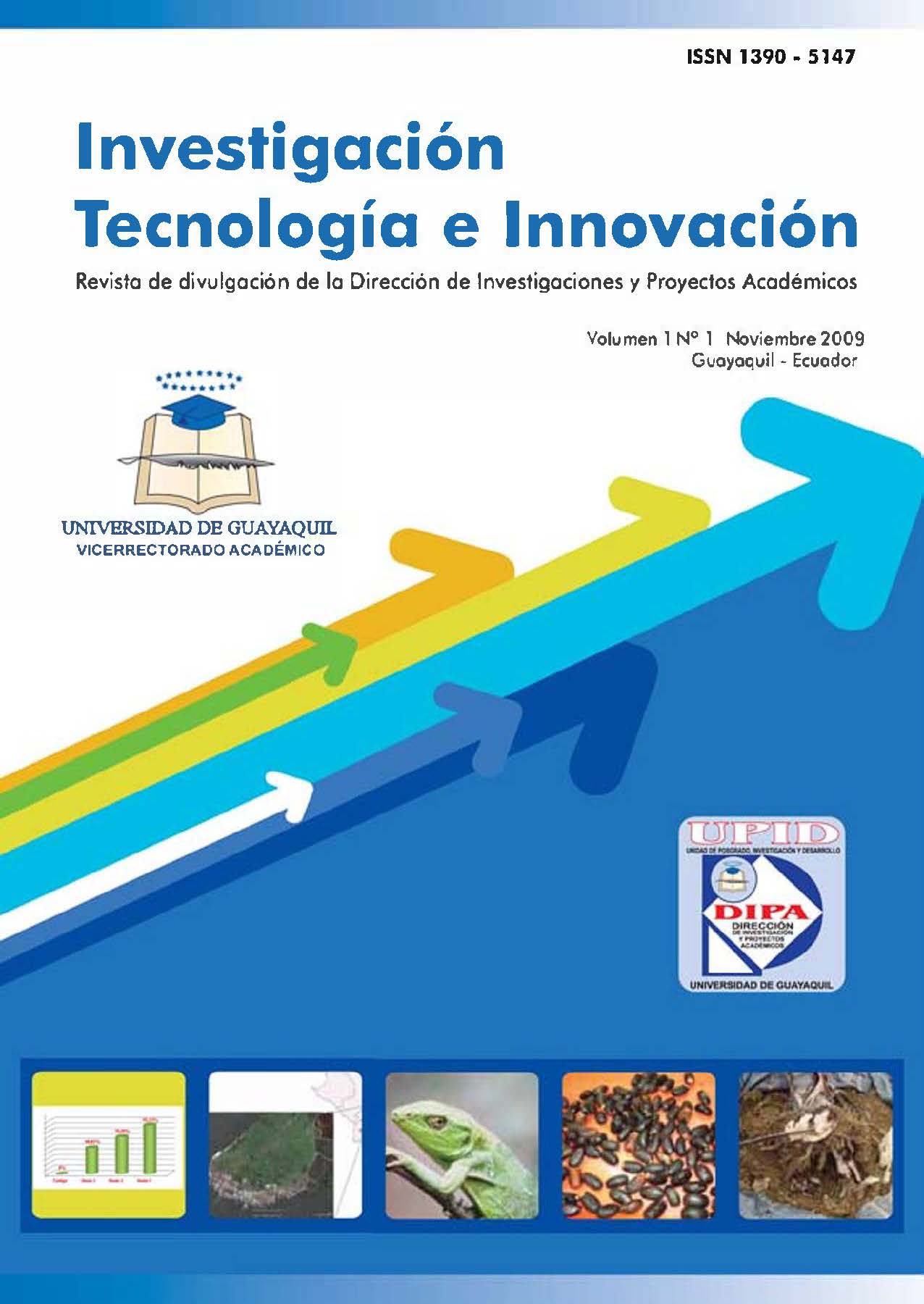Mucuna pruriens, alternativa contra la desnutrición
DOI:
https://doi.org/10.53591/iti.v1i1.32Palabras clave:
Desnutrición infantil, bajo rendimiento escolar, aminoácidos esenciales, proteínas séricas, percepción viso-motrizResumen
El presente artículo investiga la factibilidad de utilización de la leguminosa silvestre Mucuna pruriens (L.) DC. (fabáceae) como una alternativa viable para paliar el déficit nutricional que presenta un amplio porcentaje de niños y niñas que se educan en las escuelas de Guayaquil. Se considera que el bajo rendimiento escolar que se observa en la educación fiscal, está relacionado con la deficiente alimentación de los educandos. Para el efecto, se analizó el valor biológico del frejol Mucuna Pruriens8• Se prepararon y presentaron varios productos hechos a partir de esta leguminosa9, se recolectaron semillas en Vinces para culturizarlas, y con ellas se realizaron los estudios de este trabajo en las Facultades de Ciencias Químicas, Ingeniería Química e ITAV de la Universidad de Guayaquil. Se determinó que el fréjol M. Pruriens no presenta toxicidad aguda oral, tiene un alto valor nutricional al poseer proteínas de buena calidad, aminoácidos esenciales, vitaminas, entre otros. Su nivel de digestibilidad se determinó en el 91,81 %, manteniendo las proteínas después de la cocción. Se evaluó su impacto positivo en la salud de los educandos de una escuela de Guayaquil, comprobándose un aume nto significativo de las proteínas séricas y nivel de madurez en la percepción viso-motriz y desarrollo mental. Con respecto a su factibilidad económica, se determinó una eficiente relación costo/beneficio.
Citas
Annan K. Secretario Genera l de la ONU (2002). "Seg unda conferencia mundial sobreali mentación" Revista Iberoamericana de Ciencia, Tecnología, Soc ie dad e Inn ovac ió n. Edita: Organizació n de Estados Iberoameric anos para la educació n, la Ciencia y la Cultura.
Banco Mund ial (2007). In sufic ie ncia Nutriciona l en el Ecuador, Quito. P.138 www.fil pkart.com /unsufic ie ncia,nutricio na l- Ecuador.
Díaz, G., Estupiñan , K. (2004). " La Mucuna como Cultivo de Cobertura Alternado con el Maíz". Universidad Técnica Estata l de Quevedo. Vol.3 UTEQ - PROMSA.
Ministerio de Previsión Soc ial y San idad (1975). Ins tituto Nacional de Nutrición "Tabla de composición de ali mentos ecuatorianos"
Myhrman R., " Determinació n y separac ió n de L-Dopa de Mucuna". Jud son College, lllino is . EEUU. Año 2004. Email: rmyhrman @judson- il.edu www. cidicco.hn/memoriamucuna.htm
Moreano, M. (200 1). " Perfile s Nutr ic io na les por Países" . Ecuador FAO, Roma.
San Lucas Mar le ne (2008). Elaboració n del pan utilizando harina de trigo, quinua , avena, para mejorar las condic io nes nutricio nale s en la población. Tesis de grado doctora l, Facult ad de ciencias Químicas Universidad de Guayaqu il, p.168.
Descargas
Publicado
Número
Sección
Licencia
Derechos de autor 2009 Leila Prías, Vicente Painii, Alfonso Ramos, Oswaldo Pesantes, Ana Zambrano, Andrea Vargas, Fabricio Tamayo, Leonardo Vargas

Esta obra está bajo una licencia internacional Creative Commons Atribución-NoComercial-SinDerivadas 4.0.






